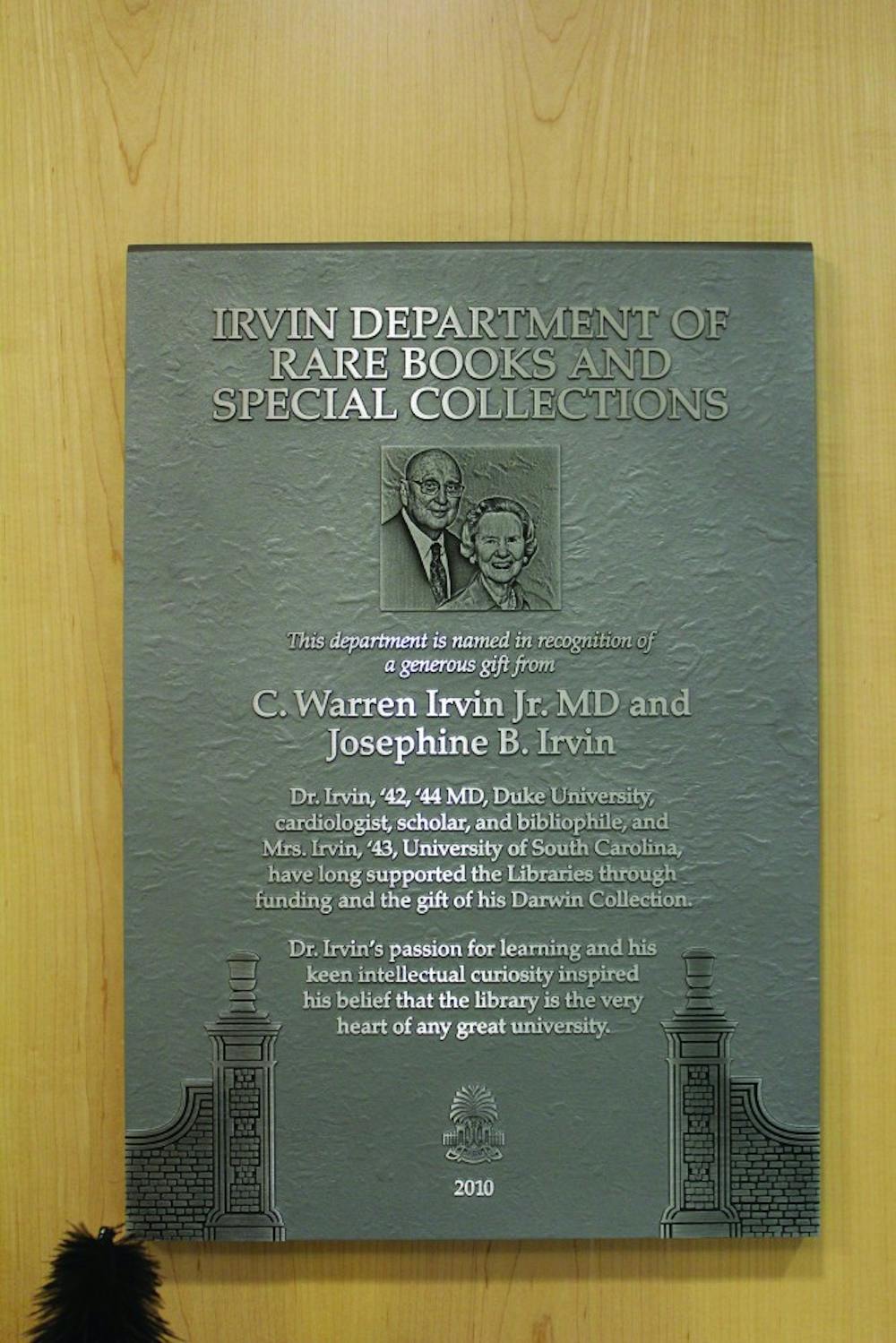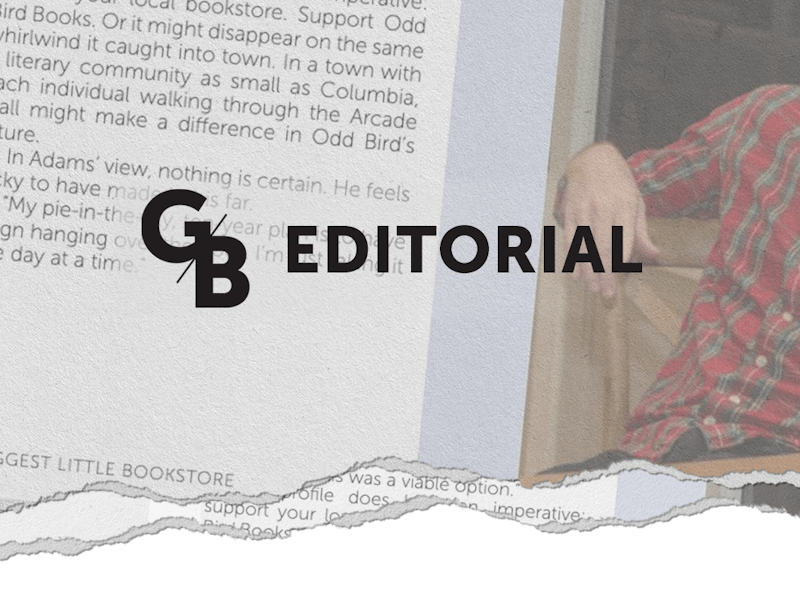What do studying students, Starbucks, Giuseppe Garibaldi’s sword and F. Scott Fitzgerald’s flask all have in common? They can all be found in the Thomas Cooper Library at the University of South Carolina. While the latter two items may be a surprise to some, they are only a couple of the countless rare items housed in the library. However, don’t go trolling around the lower floors of the library expecting to find hidden treasure – in order to find the rarities like the ones described, you’ll have to visit the Irvin Department of Rare Books and Special Collections.
The Irvin Department of Rare Books and Special Collections is housed in the Hollings Library, just past the Starbucks at the back of the main floor of Thomas Cooper. In stacks underneath the library, the Irvin Department contains around 275,000 items pertaining to an endless range of subjects that are more than just books and ephemera. Students and visitors alike can use the collections for research – if they know about the collections in the first place. While many undergraduates may not be aware of these materials, researchers travel from around the world to see the collections such as the rare Scottish literature anthology, F. Scott Fitzgerald material and the Pat Conroy archive that the Irvin Department contains.
What is first notable about the Irvin Department – beyond its sheer size – is its immense chronological span. According to Dr. Michael C. Weisenburg, reference and instruction librarian for the department, the collections hold pieces ranging from contemporary to ancient, with the oldest items in the collections, Babylonian cuneiform tablets, clocking in at about 4,000 years old. As for more local interests, the collections house older items that are significant to the university as well. “[The Irvin Department holds] the core collections of the original South Carolina College Library. If [students] ever wondered what students were reading around 200 years ago, then we would be the place to come and see those books,” Weisenburg said.
In regard to the most valuable items within the collections, Weisenburg was reluctant to assign any monetary worth because the overall historical significance of many items is priceless. Instead, he gave a few examples of culturally-significant standouts.
“We have a medieval manuscript copy of Higden’s Polychronicon which contains a pre-Columbian reference to North America, Phillis Wheatley’s Poems of Various Subjects Religious and Moral is the first book published by an African American and F. Scott Fitzgerald’s manuscript ledger book is an invaluable recourse for not only his biography but also the business of authorship in the early 20th century United States.”
Not only are most of the items in the collections irreplaceable, many of them are just odd. In addition to Garibaldi’s sword and F. Scott Fitzgerald’s flask, the collections also hold Fitzgerald’s mother’s wedding corset and a cast of the poet Robert Burns’ skull. With oddities like these, some items in the department were harder to come by than others. For example, the cast of Burns’ skull raised some questions in airports.
“Dr. G. Ross Roy acquired [the skull] in Scotland and carried it with him to France before coming back to the United States. French customs were a bit concerned and spent some time examining it. It’s admittedly a difficult item to explain,” Weisenburg said.
While rare books might seem like more of an exciting venture for humanities students, the collections contain many sources on natural science as well. Weisenburg even recounted that he “once had a student weep tears of joy at seeing the first edition of Charles Darwin’s 'On the Origin of Species.'” Although biology classes are unlikely to take a trip to the Irvin Department for a class, STEM students might take note that the library, as well as the lab, could have a discovery waiting for them.
Although he works with a vast variation of items – from the first editions of books, to the personal objects of renowned personalities, to a myriad of other printed materials and objects – Dr. Weisenburg was able to speak to one of his favorite items within the collections.
“One of my favorite items to teach with is a 16th century Spanish nautical text. It’s great because it has elements called volvelles, which are intricate paper wheels that can move and aid in computations while at sea. They are early examples of analog, paper computers. It’s clear that the book was used at sea, and while I can’t prove it was used by pirates, the book is contemporaneous with the great age of piracy,” Weisenburg said.
So, how does one visit some of the university’s hidden-but-not-so-hidden assets? Anyone who wants to conduct their own research with the collections can register with the Smith Reading Room. If you just want to visit, the Irvin Department has a rotating display of one of their own collections, or sometimes even a traveling collection, on public exhibit. And, next time you’re studying in Thomas Cooper Library, try to draw inspiration from the notion that if 4,000-year-old Babylonian cuneiform tablets can make it to a South Carolina library in 2019, then you can probably make it through your next study session.

